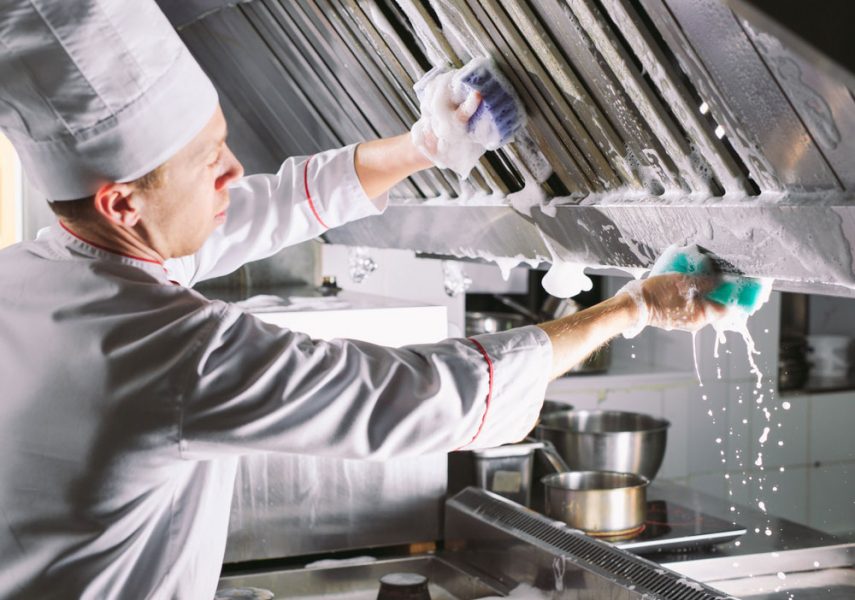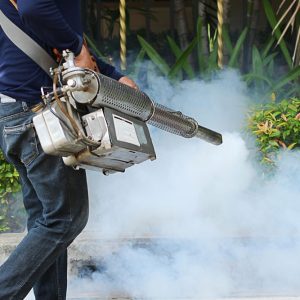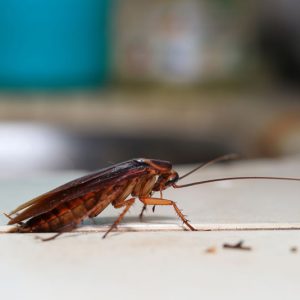Description
What Is a Kitchen Hood?
A kitchen hood, exhaust hood, or range hood is a contraption that hangs above commercial ranges, fryers, grills, and other cooking equipment. It contains one or more mechanical fans that remove airborne heat, grease, smoke, and odors. It is an absolute magnet for grime and debris.
How Does a Commercial Kitchen Hood Work?
Most kitchen exhaust hoods have four primary parts. Here’s what they are and what they do.
- Filters. These are stainless steel or mesh accessories that span the opening in the ductwork and keep debris from flying into the fans.
- Fans. Behind the filters are one or more mechanical fans that suck air up through the ductwork and out of the facility.
- Grease traps. As debris- and smoke-filled air rushes up the ventilation system, it collects on the side of the ductwork and drips back down. On the inside edge of the ductwork are small trays that collect that grease. They’re the grease traps.
- Ductwork. The ductwork is the entire conduit that captures the airflow through a flared opening and delivers it up and away. The filters, fans, and grease traps are inside of the ductwork.
The Benefits of Restaurant Kitchen Hood Cleaning
Your restaurant kitchen hood has a consistent supply of dirty, greasy air flowing through it during all cooking hours. When built-up grease and grime are removed, it:
- Enhances airflow in your kitchen. The build-up of grease and grime in the ventilation system lessens air circulation and makes being in the kitchen less comfortable and healthy.
- Reduces the risk of kitchen fires. Grease is flammable. When it’s built-up and/or dripping from the ceiling, it’s an obvious hazard in a kitchen.
- Reduces the risk of grease-related slips and falls. Grease is also slippery.
- Increases the kitchen’s overall hygiene. Having old food and residue linger around in a cooking environment is a contamination hazard. A dirty hood pollutes the entire space.
- Saves you money from potential fines and closures. You’ll also increase the fan motor life on your blower blades by removing any buildup on them.
- Keeps you on the right side of the law. It’s required to clean your commercial range hood. That should be reason enough.
- Runs quieter. If you’re in a BBQ restaurant or using a lot of solid-fuel, buildup on fan blades makes them louder.
Increases overall hygiene, saves money, hmm … sounds like a QR code menu.
How Often Should I Clean My Restaurant Kitchen Hood?
The NFPA, along with their requirement to clean kitchen hoods, in general, lays out recommended frequencies. Make sure to include this in your restaurant cleaning checklist.
Monthly Restaurant Hood Cleaning
The NFPA recommends that kitchens or cooking operations using solid fuel should clean their hoods every month. Solid fuel refers to solid material that is burned for cooking, like wood, charcoal, and coal.
Quarterly Restaurant Hood Cleaning
High-volume operations without solid fuel should undergo quarterly commercial range hood cleaning. This is most restaurants that don’t use solid fuel. Diners, short-order spots, and the majority of casual dining establishments.
Semi-Annual Restaurant Hood Cleaning
Any cooking operation with moderate volume, or volume below that of an average commercial dining establishment.
Annual Restaurant Hood Cleaning
Any low-volume cooking systems like churches, day camps, seasonal businesses, or restaurant operations in service during only special events.


Restaurant Vent Hood Cleaning: A How-To Primer
On to the fun stuff. Here’s how to clean most commercial kitchen ventilation hoods, in six easy steps.
Step 1: Restaurant Hood Cleaning Prep
Turn off all valves and ranges. Unplug everything and let it all cool down. Nothing around you should be remotely near being on. Then cover all surrounding surfaces and equipment with plastic sheeting. This is a notoriously dirty job and grease drips and spills all over the place.
Also, get all your restaurant cleaning supplies and equipment in order:
- Plastic sheeting
- Degreaser concentrate
- Non-abrasive scrubbing pad or soft-bristled brush
- Rubber gloves
- Sanitization bucket
Step 2: Restaurant Hood Filters Cleaning
Whether or not you have baffle, mesh, or charcoal filters, they should all easily push up and slide out. Once you remove the filters, remove any stainless steel spacers that rest on or near the grease traps. Use non-abrasive scouring pads or a soft-bristled brush to give your filters a once-over. Then, if they’re not particularly dirty or large, you can run them through the dishwasher.
But if your filters are caked in grime or big, you’ll need to fill up a sink with water and degreaser concentrate. Then let your filters and spacers soak in the water for at least 3 hours. Many businesses soak them overnight.
Step 3: Restaurant Hood Grease Trap Cleaning
After removing the filters and spacers, you’ll remove the grease cups or grease traps. There should be traps on each side of the hood. Remove them, being careful not to spill any standing grease in them. Once removed, pour the grease into a separate container. Do not dump the grease into a drain. It will congeal and cause blockages. Let it dry, then throw it out in a durable, sealed container.
Wipe down the traps with non-abrasive scouring pads or soft-bristled brushes. Traps are often too big to run through the dish pit. Soak them with the filters in the degreaser solution for the same length of time.
Step 4: Restaurant Hood Fan Cleaning
Time to remove the fans or blower blades. Many low-profile hoods have a dual-motor and dual-fan system. It draws air from both sides of the hood for an even distribution of flow.
Remove each fan’s protective fan cover, then unscrew the center hub of the fan to pull it down. Give your fans a scrub with a soft-bristle brush or non-abrasive scrubbing bad. If they’re really bad, toss them in the soaking solution with the filters and traps. If they’re not that bad after the initial scrub, you can run them through a dishwasher.
Step 5: Restaurant Hood Duct Cleaning
Create the same concentration degreaser solution as in your sink, but this time keep it in a small sanitizer bucket. Use the same type of non-abrasive scrubbing pad or soft-bristle brush to scrub the interior and exterior of the exposed range hood. After you’ve sufficiently scrubbed and removed any grease on the visible ductwork, you can reinstall the other pieces.
Step 6: Kitchen Vent Hood Reassembly
Rinse and dry everything you’ve cleaned and soaked. First put the fans back in. If you’re replacing fans in a dual-fan system, remember that they’re directional. They cannot be swapped. The left one must go back on the left side and the right on the right.
Also, don’t leave your fan’s protective covers off. They used to be used to hold hanging grease traps, and with mounted traps they may seem forgettable. But they still protect you from touching a fan blade when the motor’s on. If, for some reason, you’ve taken the filters off without turning the fans off. Which you should never, ever do.
After reinstalling the fans, place the grease traps, spacers, and filters back on. Remove the plastic sheeting that surrounds you, mop the floors, and voilà. You’ve done it.


Restaurant Kitchen Hood Cleaning and You
Can you clean your restaurant hood yourself? You sure can. What’s much harder to do is clean the entire duct system, though. You’ll likely need to get professional duct cleaners involved to tackle the ductwork that goes up and through the ceiling and out the building. They’ll typically steam clean your restaurant hoods and the rest of the ductwork.
But to clean and degrease the hood itself, you can do it with the right restaurant cleaning supplies, a little patience, and attention to detail. And you’ll save a nice chunk of change doing so.
It’s possible to go over a year without cleaning your hoods without anything bad happening. But you’re setting yourself up for catastrophe. And fines. And closure. And ill-health. And contamination. The list goes on. There’s no reason not to clean your ventilation hood often. Monthly, ideally.




sujon –
good